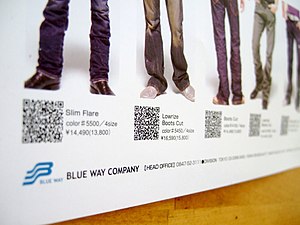I’ve been looking out for people using these things in unexpected ways – and finding surprisingly few. There’s this fairly effective decorative example. Or this portrait made up of thousands, each of which is a link to a video. Or the guy who proposed via code – God would he have looked like a loser if she hadn’t accepted. But I think the prize goes to the Netherlands, which to celebrate the 100th anniversary of its royal mint is circulating €5 and €10 coins with codes on them that link to a *surprise*.
I’ll save you the trouble of pointing a phone at the screen (yes, that works), it goes here. Though to be honest, the surprise isn’t all that.
But the coins are kind of funky, even if they’re not really Euros in that they aren’t legal tender outside the Netherlands. (Perhaps just as well. How would you react to finding that weirdly realistic image of Queen Beatrix in your change?) And even at home, the €10 ones won’t be seeing a lot of circulation. Made of gold, they’re worth more than their face value.
Naturally there was a brief insta-panic about having ‘tracking codes’ on money that might secretly be scanned by vending machines, etc. But as every coin has the same code, all it actually tells you is that €5 has been spent. Which, let’s face it, you probably knew already. So it’s a rather pointless and gimmicky application of the technology really. Now if all the coins had a different one you could have some fun. Prizes maybe. Or say one in ten thousand links to a really fierce porn site.
Just one thing still bothers me. If the Dutch Royal Mint is only a hundred years old, what the hell did they use for money before?
Related articles
- QR Code (i.doubt.it)
- The Dutch are Making QR-Coded Coins. Seriously. [Money] (gizmodo.com)




